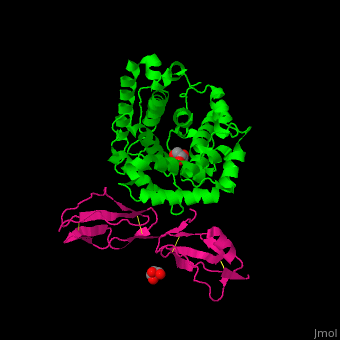Complement factor
FunctionComplement factor H (CFH) regulates the complement system which is part of the immune response. CFH protects cells by preventing the activation of the complement system when it is not needed. CFH contains 20 short consensus repeats (sushi domains, i.e., a 5 strand β-sandwich arrangement).[1] DiseaseCFH mutations are involved in dense deposit disease, age-related macular degeneration, atypical hemolytic-uremic syndrome, schizophrenia, stroke and the kidney disorder glomerulonephritis. RelevanceCFH is recruited by human pathogens resulting in increased virulence. Structural highlightsThe sushi domains are ca. 60 amino acid long containing 2 Cys-Cys bonds.
|
| ||||||||||
3D structures of complement factor H3D structures of complement factor H
Updated on 20-December-2015
ReferencesReferences
- ↑ Rodriguez de Cordoba S, Esparza-Gordillo J, Goicoechea de Jorge E, Lopez-Trascasa M, Sanchez-Corral P. The human complement factor H: functional roles, genetic variations and disease associations. Mol Immunol. 2004 Jun;41(4):355-67. PMID:15163532 doi:10.1016/j.molimm.2004.02.005
